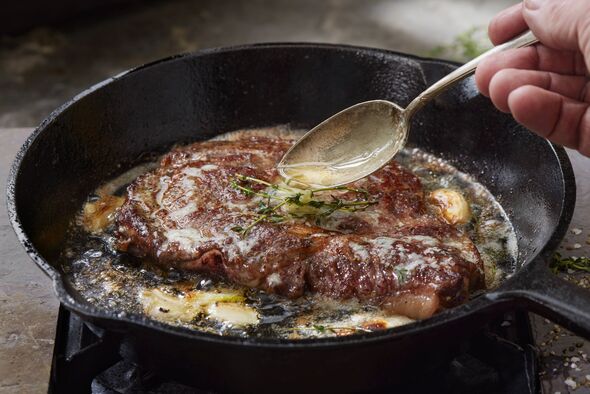Lifestyle
Master Steak Cooking: Why Avocado Oil Beats Butter and Olive Oil

Cooking a perfect steak often proves challenging, with many ending up tough or overcooked. Culinary expert Jon Gilson of the Whole Life Challenge emphasizes that the choice of cooking fat plays a crucial role in achieving a juicy, tender steak. He advocates for using avocado oil instead of traditional options like butter or olive oil, which can compromise both flavor and texture.
The problem with butter and olive oil lies in their lower smoke points, which can lead to burning at the high temperatures required for searing steak. This not only produces unwanted smoke but can also impart a bitter taste to the meat. Avocado oil, on the other hand, has a smoke point of 520 degrees Fahrenheit (270 degrees Celsius), making it ideal for high-heat cooking. Gilson points out that this oil is also rich in omega-3 fatty acids, providing both health benefits and culinary advantages.
Why Avocado Oil is the Preferred Choice
Avocado oil’s higher smoke point allows it to withstand intense heat without burning, resulting in a beautifully seared steak with a crisp exterior and a tender interior. Its more neutral flavor profile allows the natural taste of the beef and seasoning to shine through. Gilson recommends incorporating butter or olive oil towards the end of the cooking process if you enjoy their rich flavors, but stresses that avocado oil is essential for the initial searing.
To successfully prepare a steak, consider the following method. Start with a 454-gram ribeye steak or a cut of your choice. Preheat an iron pan in the oven to 260 degrees Celsius (500 degrees Fahrenheit). Season the steak generously with salt and pepper, then rub a small amount of avocado oil over it until fully coated.
Once your oven reaches the desired temperature, remove the pan and place it on the hob. Set the heat to high and add two tablespoons of avocado oil to the pan. Sear the steak for one minute on each side to create a flavorful crust. After searing, quickly transfer the pan back into the hot oven and cook for an additional two minutes. If the steak is thicker than 25 millimeters (one inch), flip it over and allow it to cook for another two minutes.
After removing the steak from the oven, let it rest for three to four minutes. This resting period is crucial as it allows the juices to redistribute throughout the meat, ensuring each slice is succulent.
Following this method will reward you with a steak that boasts a caramelized crust and a tender, juicy interior. By swapping out traditional cooking fats for avocado oil, you can elevate your steak preparation and enjoy a delicious result.
-

 Entertainment2 months ago
Entertainment2 months agoIconic 90s TV Show House Hits Market for £1.1 Million
-

 Lifestyle4 months ago
Lifestyle4 months agoMilk Bank Urges Mothers to Donate for Premature Babies’ Health
-

 Sports3 months ago
Sports3 months agoAlessia Russo Signs Long-Term Deal with Arsenal Ahead of WSL Season
-

 Lifestyle4 months ago
Lifestyle4 months agoShoppers Flock to Discounted Neck Pillow on Amazon for Travel Comfort
-

 Politics4 months ago
Politics4 months agoMuseums Body Critiques EHRC Proposals on Gender Facilities
-

 Business4 months ago
Business4 months agoTrump Visits Europe: Business, Politics, or Leisure?
-

 Lifestyle4 months ago
Lifestyle4 months agoJapanese Teen Sorato Shimizu Breaks U18 100m Record in 10 Seconds
-

 Politics4 months ago
Politics4 months agoCouple Shares Inspiring Love Story Defying Height Stereotypes
-

 World4 months ago
World4 months agoAnglian Water Raises Concerns Over Proposed AI Data Centre
-

 Sports4 months ago
Sports4 months agoBournemouth Dominates Everton with 3-0 Victory in Premier League Summer Series
-

 World4 months ago
World4 months agoWreckage of Missing Russian Passenger Plane Discovered in Flames
-

 Lifestyle4 months ago
Lifestyle4 months agoShoppers Rave About Roman’s £42 Midi Dress, Calling It ‘Elegant’









